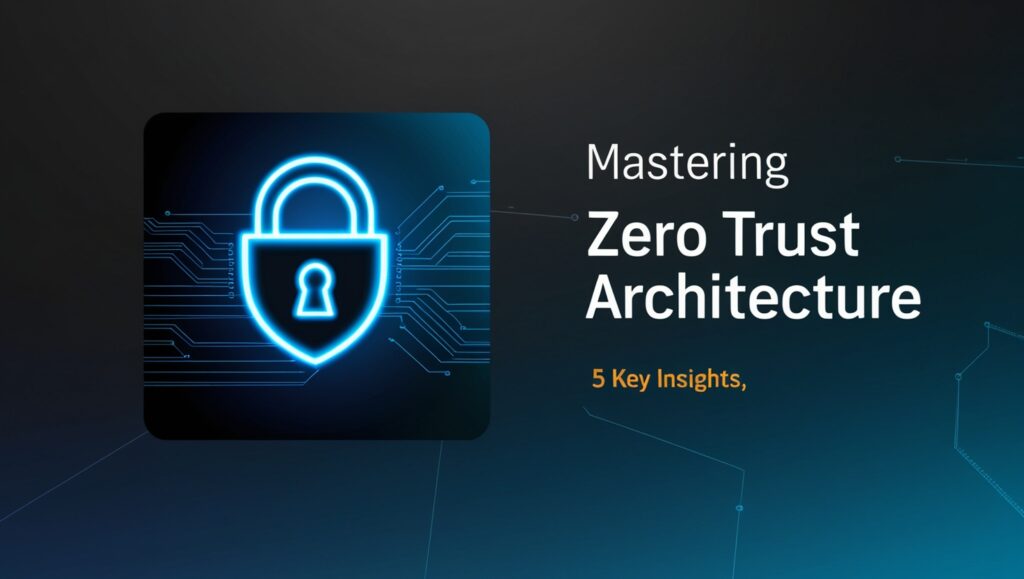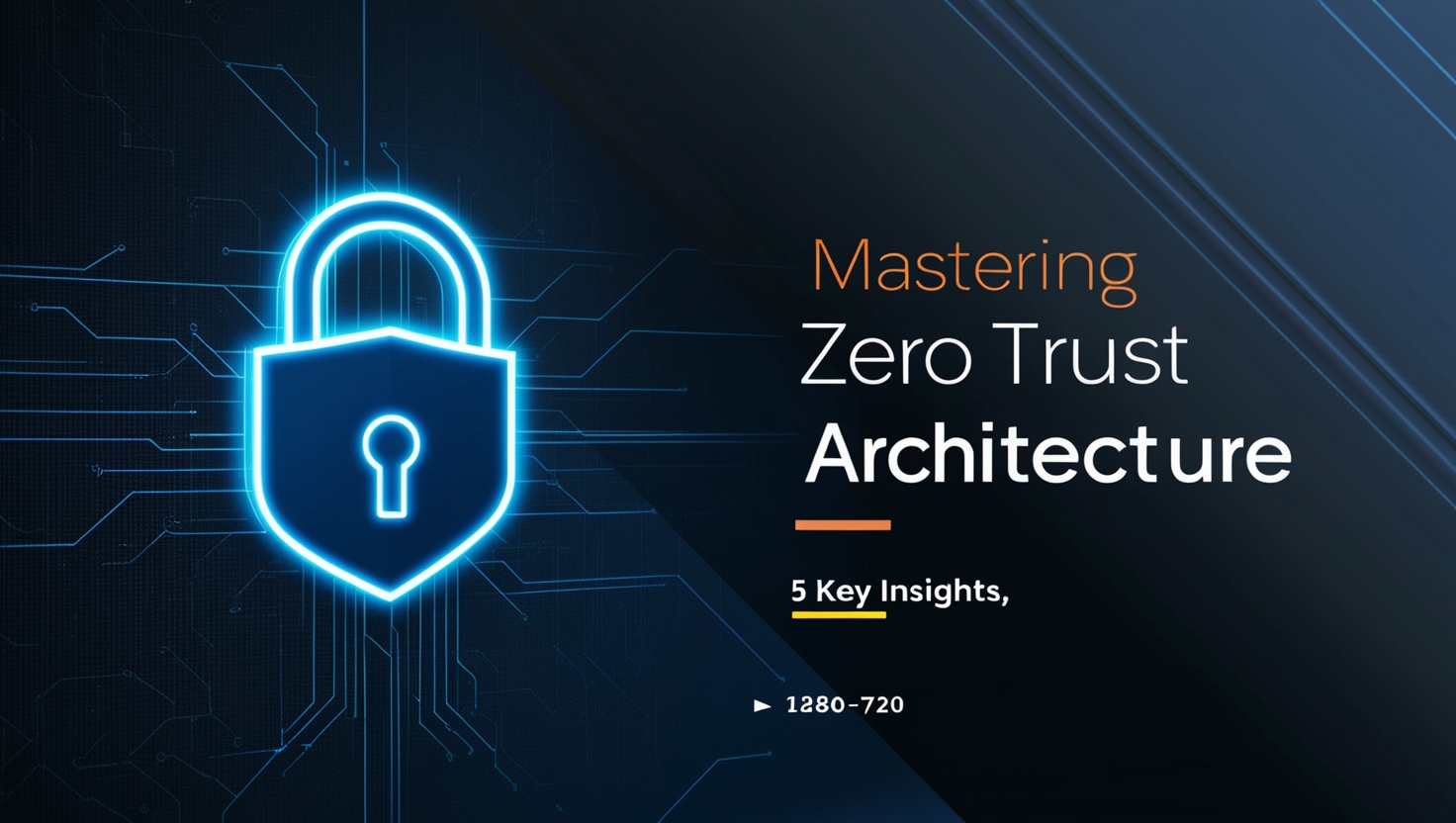1. What Is Zero Trust Architecture?
Zero Trust Architecture (ZTA) is a cybersecurity framework that follows the principle of “never trust, always verify.” Unlike traditional security models that assume trust based on network location, ZTA continuously authenticates users, devices, and applications before granting access. This approach minimizes security risks and prevents unauthorized access to sensitive data.

2. The Evolution of Cybersecurity: Why Zero Trust Matters
Cybersecurity has evolved significantly over the years. Traditional perimeter-based security models are no longer sufficient due to increasing remote work, cloud adoption, and sophisticated cyber threats. Zero Trust Architecture addresses these challenges by ensuring security at every level, regardless of the network or location.
3. Core Principles of Zero Trust Architecture
To effectively implement Zero Trust Architecture, organizations should follow these core principles:
- Continuous Verification – Authenticate and authorize every access request in real-time.
- Least Privilege Access – Grant users only the access they need to perform their tasks.
- Micro-Segmentation – Divide networks into small segments to limit movement of threats.
- Multi-Factor Authentication (MFA) – Require multiple authentication factors for access.
- Monitoring and Logging – Continuously monitor user activities and analyze logs to detect anomalies.
4. Zero Trust in Action: How It Works
Zero Trust Architecture follows a structured approach to security:
- User Verification – Ensures that users are who they claim to be through identity verification.
- Device Authentication – Verifies the security posture of the device requesting access.
- Least Privilege Enforcement – Limits access to necessary resources only.
- Behavior Monitoring – Tracks user activity and detects any suspicious behavior.
- Real-Time Response – Uses AI and automation to respond to threats instantly.
5. Benefits of Adopting a Zero Trust Model
Implementing Zero Trust Architecture offers several advantages:
- Enhanced Security – Reduces the risk of unauthorized access and data breaches.
- Improved Compliance – Helps meet regulatory requirements such as GDPR, HIPAA, and NIST.
- Better Visibility – Provides a clear view of network activity and access patterns.
- Reduced Attack Surface – Limits the reach of potential cyber threats.
- Secure Remote Access – Enables safe access for remote employees and third parties.
6. Challenges of Implementing Zero Trust
While Zero Trust Architecture is highly effective, it comes with certain challenges:
- Complex Implementation – Requires significant changes in IT infrastructure.
- High Costs – Initial deployment and maintenance can be expensive.
- User Resistance – Employees may resist additional security measures.
- Integration Issues – Legacy systems may not be compatible with Zero Trust policies.
- Continuous Monitoring – Requires advanced analytics and automated tools for effective implementation.
7. Real-World Examples of Zero Trust Success
Several organizations have successfully adopted Zero Trust Architecture, including:
- Google: Implemented the BeyondCorp framework to secure remote work.
- Microsoft: Uses Zero Trust to protect its cloud infrastructure and services.
- Department of Defense (DoD): Deploying Zero Trust strategies to strengthen national cybersecurity.
8. Zero Trust and the Future of Cybersecurity
Zero Trust Architecture is shaping the future of cybersecurity. With the rise of AI-driven threats and cloud-based operations, organizations must shift to Zero Trust to stay protected. Future advancements will include:
- AI-Powered Security – Leveraging artificial intelligence to detect and respond to threats.
- Stronger Identity Management – Enhanced biometric and behavioral authentication.
- Automated Policy Enforcement – Using machine learning to adapt security policies in real time.
9. Getting Started with Zero Trust: Practical Steps
To implement Zero Trust Architecture, follow these steps:
- Assess Your Security Posture – Identify vulnerabilities and security gaps.
- Define Access Policies – Establish rules for identity and device verification.
- Implement Multi-Factor Authentication (MFA) – Strengthen authentication methods.
- Segment Your Network – Limit access to specific resources.
- Monitor and Automate – Use security analytics and automation for threat detection.
10. Common Myths About Zero Trust Debunked
There are many misconceptions about Zero Trust Architecture. Let’s debunk a few:
- “Zero Trust means zero access.” – False. It means access is verified continuously.
- “Zero Trust is only for large organizations.” – False. Any organization can implement Zero Trust.
- “Zero Trust is too complicated.” – False. With the right strategy, it can be deployed effectively.
11. FAQ on Zero Trust Architecture
1. Is Zero Trust Architecture expensive?
While initial implementation may be costly, it reduces long-term security expenses by preventing cyberattacks.
2. Does Zero Trust slow down network performance?
When properly implemented, Zero Trust should not impact performance. It enhances security without compromising speed.
3. Can small businesses implement Zero Trust?
Yes, small businesses can adopt Zero Trust using cloud-based security solutions and basic principles like MFA and least privilege access.
4. How does Zero Trust protect against insider threats?
Zero Trust continuously verifies user behavior, making it harder for insiders to gain unauthorized access.
5. Is Zero Trust the same as VPN?
No, Zero Trust is more advanced than a VPN. It verifies every access request instead of just encrypting traffic.

Leave a Reply